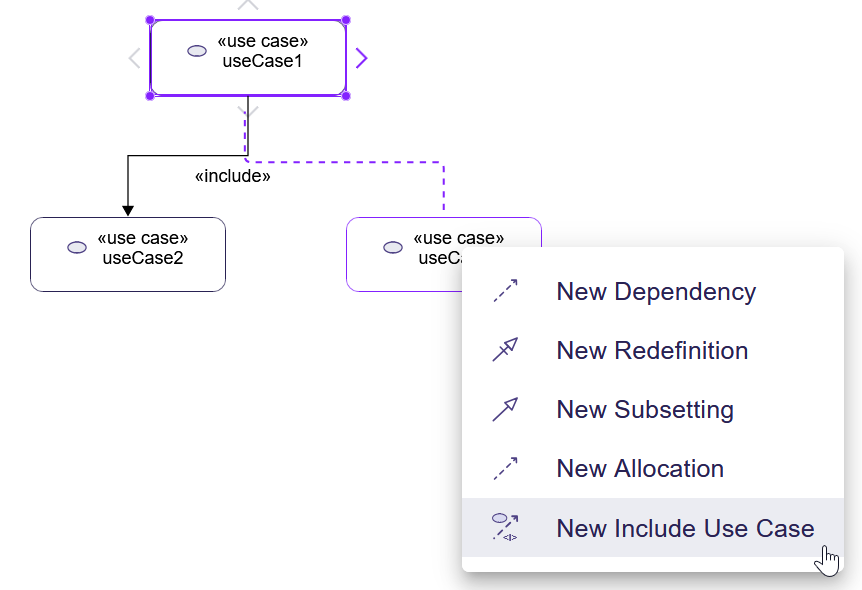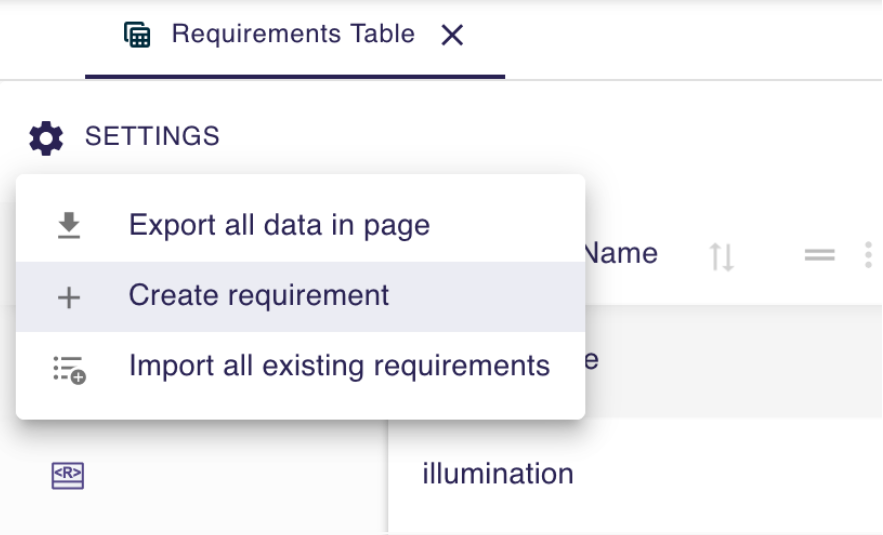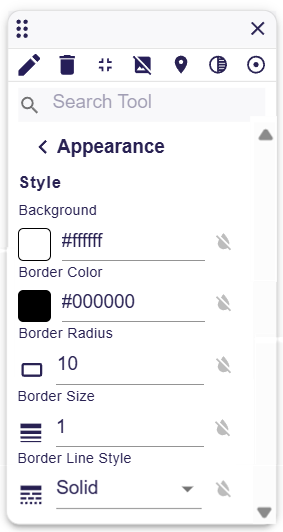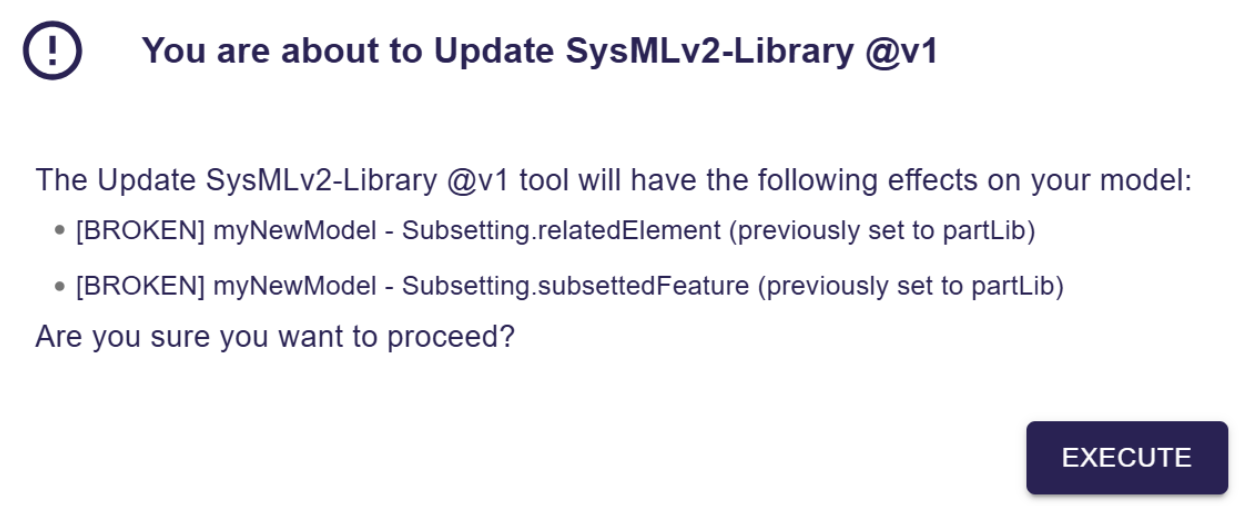SysON 2025.10 is here, and it feels like a breath of fresh air. Fully aligned with the SysML v2 2025-07 release, it brings a wave of thoughtful improvements that make modeling smoother, clearer, and simply more pleasant. Open your project, try the new touches, and enjoy.
- Modeling that keeps evolving
- Better Control of your views
- A smoother modeling experience
- Textual import and libraries
- Integration made easier
Modeling that keeps evolving
SysON continues to refine how to design your models.
You can now include a UseCaseUsage via IncludeUseCaseUsage directly in the General View diagram:

Flow modeling takes another step forward as FlowUsage elements can now be exported. The example below illustrates how items flow between parts and ports:
part def P1Def {
port po1 : PortDef1;
}
port def PortDef1 {
out item item1 : P2Def;
}
part def P2Def;
part def P3Def {
in item item2 : P3Def;
}
part p1 {
part p2 : P1Def;
part p3 : P3Def;
flow from p2.po1.item1 to p3.item2;
flow f1 from p2.po1.item1 to p3.item2;
}
Another major addition is the Requirements Table view. Available on any element, it lets you display requirements in a tabular way.

And not just display them, you can edit the cells directly, create or delete requirements, import all existing ones, export to CSV, and even sort or filter the table as you wish.

The RequirementUsage’s ReqId property also now appears in the Details view.
Better Control of your views
With the new Select and Show In functions , you can control what’s displayed in the different views and even lock a view to a chosen element so it stays fixed while you explore elsewhere.
You can also switch from one ViewDefinition to another one without having to recreate the diagram:

And once in the diagram, connections are now more flexible: labels can be freely repositioned, anchor points can be set manually, and even the delete key now fully removes connection. The blinking edges that used to distract you? Gone.
Finally, your diagrams can now express more of your personality, colors and styles are fully customizable.


A smoother modeling experience
We’ve continued to fix the small details that can slow you down. The Expand All tool inside the Explorer view now behaves as expected, dragging Elements from the Explorer no longer duplicates them, and the Actors are correctly displayed in the actors compartment.
Binding connectors have also become smarter. In the General View diagram,when you create a BindingConnectorAsUsage, SysON now computes the shortest feature path between the source and the target features. In the following example, creating a BindingConnectorAsUsage between i0 and i11 automatically generates the chain : a1.a11.i11.
action a0 {
item i0;
action a1 {
action a11 {
in item i11;
}
}
}
Small improvements that together make modeling feel much more natural.
Textual import and libraries
Work on the textual import continues, resolving several long-standing issues such as name resolution in a FlowConnectionAsUsage or the import of MetadataUsage. SysON now supports all notations used to define metadata:
package p1 {
metadata def MD1 {
attribute x : ScalarValues::String;
}
metadata def MD2 {
attribute y : ScalarValues::String;
:> annotatedElement : SysML::PartUsage;
}
#MD1 part p1; // User Defined Keyword
part p2 {
@MD1 { // Nested Annotation
x = "1";
}
}
part p3;
metadata MD1 about p3; // KerML Style
part p4;
metadata m1 : MD1 about p4; // Named annotation
#MD2 part p5;
}
On the libraries side, models and diagrams that reference standard libraries now load and saved correctly. Those libraries are also excluded from validation, letting library owners manage issues directly in their projects.
When updating a library, SysON now displays an impact analysis dialog to make changes more transparent:

Handling of SemanticMetadata has also improved. SysON automatically adds the proper Subclassification or Subsetting to the annotated Type. For example, a0 now automatically subsets functions and A0 now automatically subclassifies Function:
private import Metaobjects::SemanticMetadata;
part def Functions {
attribute x : ScalarValues::String;
}
part functions : Functions [*] nonunique;
metadata def Function :> SemanticMetadata {
:>> baseType = functions meta SysML::ActionUsage;
}
#Function action a0; // a0 subset functions
#Function action def A0; // A0 subclassify Functions
Integration made easier
And for those extending SysON, integration hase been simplified.
It’s no longer necessary to declare several files manually, you can now simply reuse the following ones: SysONDocumentTreeItemContextMenuContribution, SysONExtensionRegistryMergeStrategy and SysONObjectTreeItemContextMenuContribution.
The REST APIs have also evolved to provide a more consistent and predictable experience. Both @id and elementId now share the same value (elementId), making JSON serialization easier to interpret. Although the SysMLv2 standard has not yet decided whether these two attributes should differ, this change removes ambiguity and simplifies API usage.
All REST APIs now serialize attributes and references in alphabetical order, ensuring consistent outputs.
We’ve also fixed serialization issues where primitive types were incorrectly represented as strings.
As the year draws to a close, SysON 2025.10.0 brings a more dependable and refined experience. Less friction, clearer results, and modeling flow that simply feels right.
